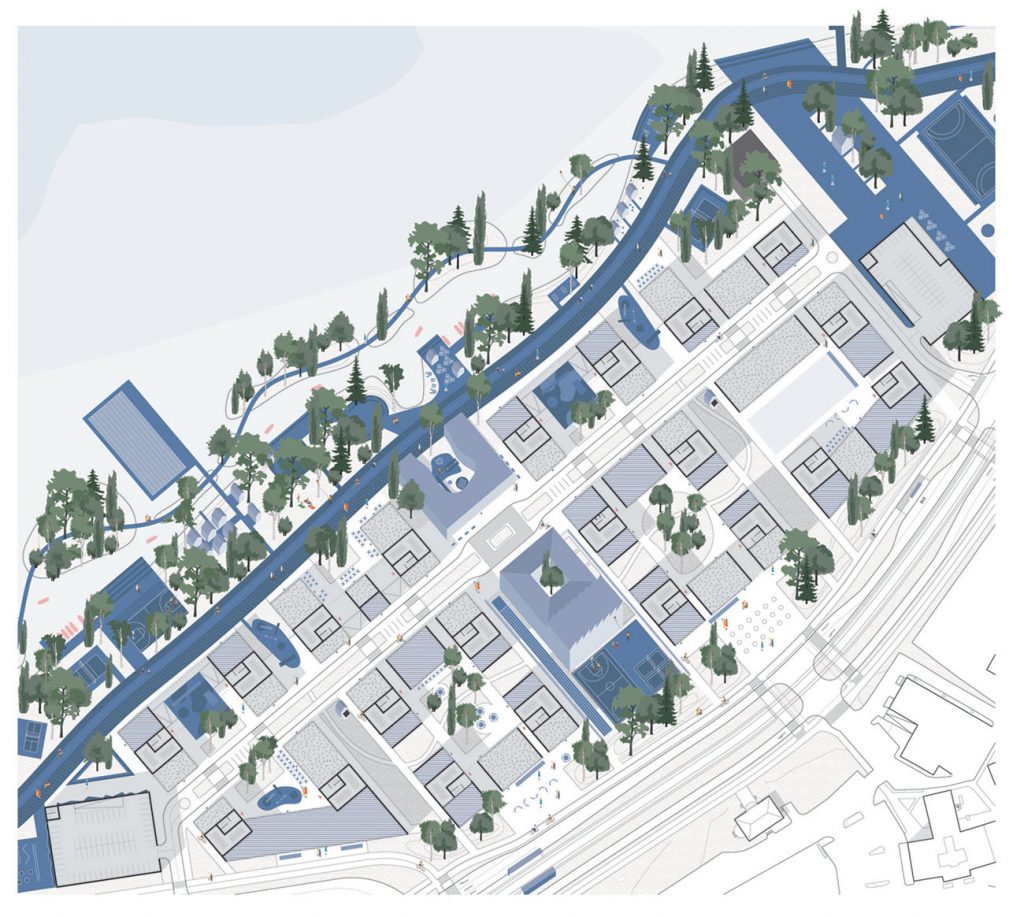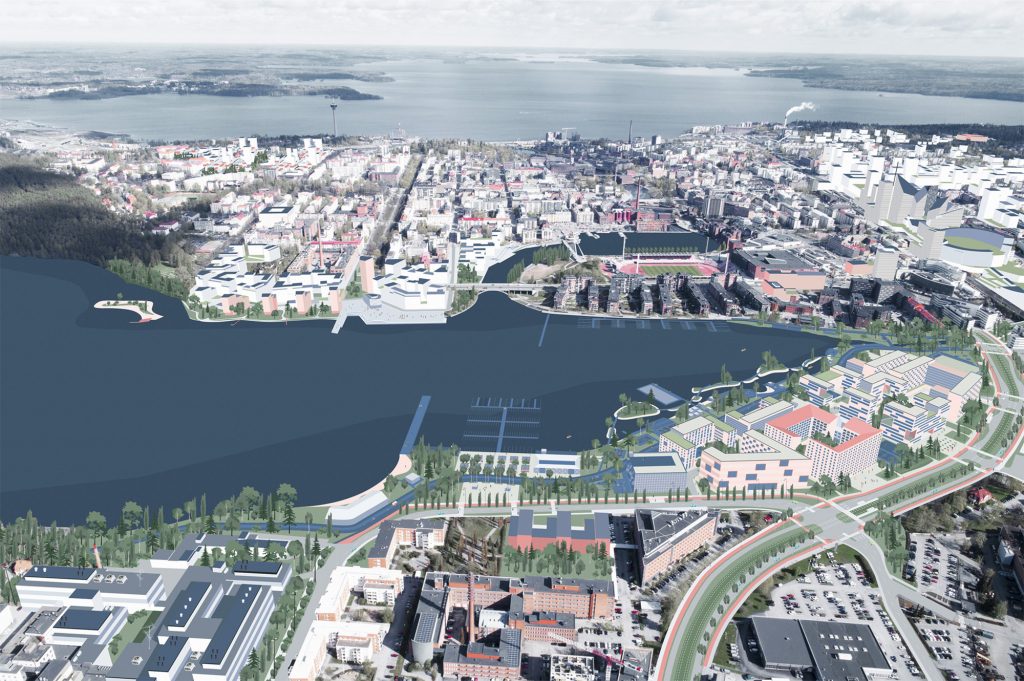Tampere Green Link
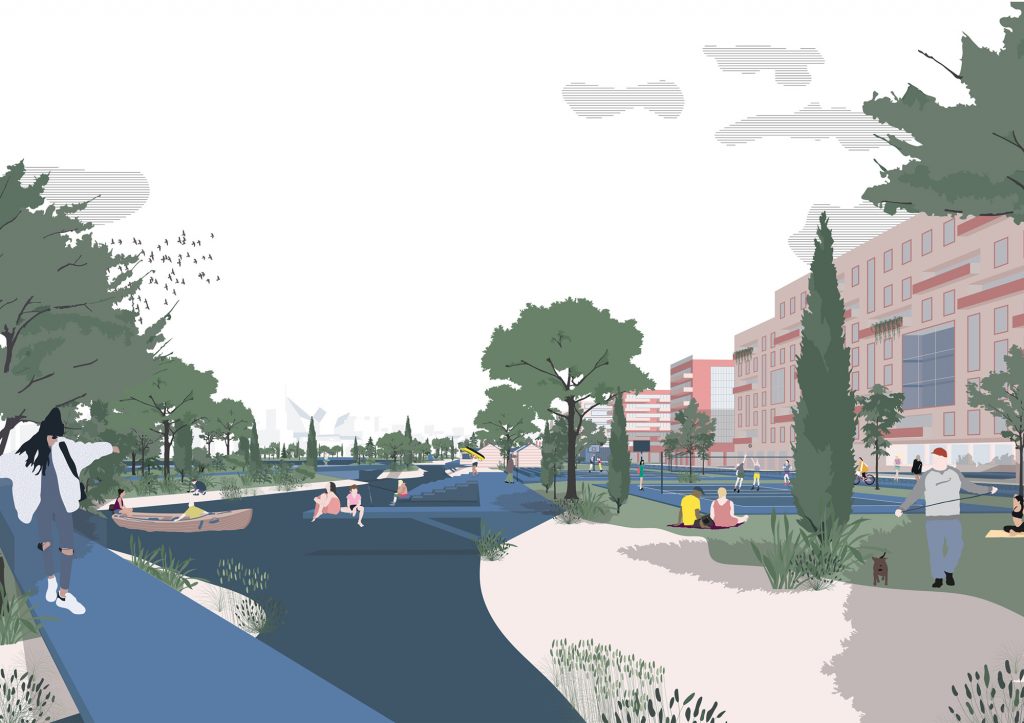
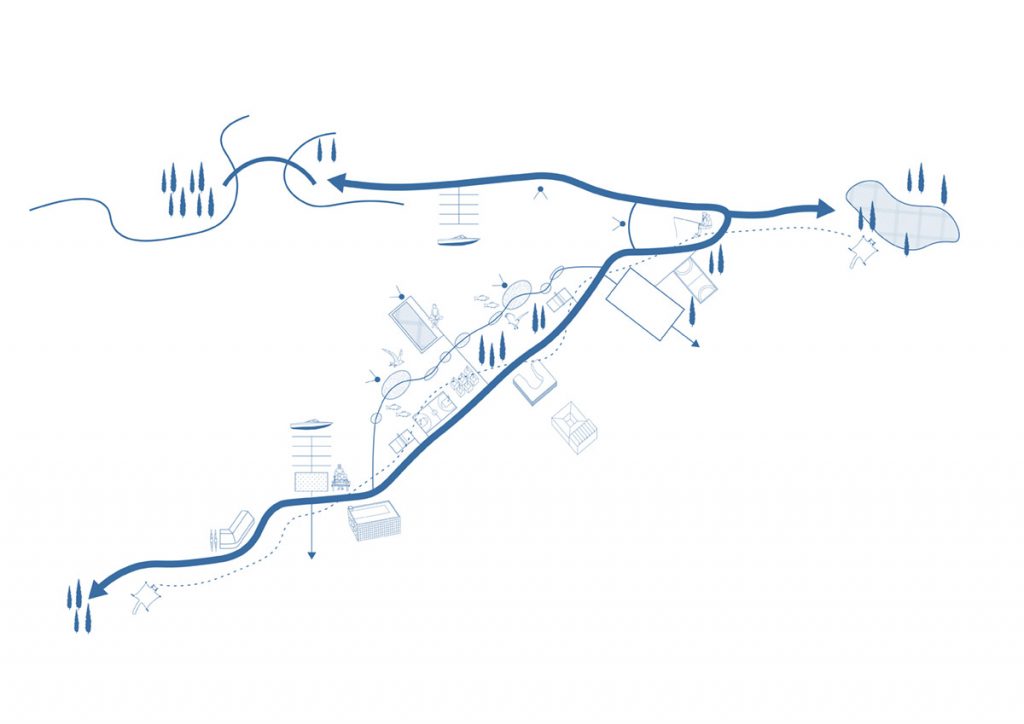
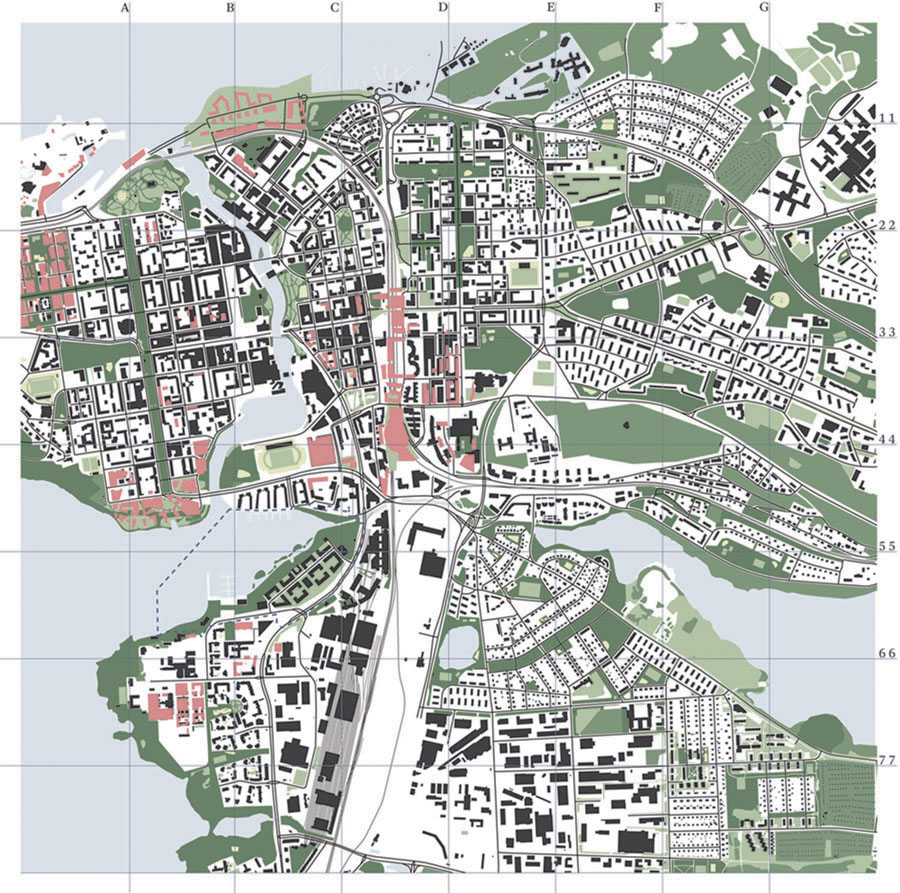
Tampere, a city situated between the two lakes of Pyhajarvi and Nasijarvi, has historically had a diverse relationship to the various parts of its long waterfront. From large industrial complexes and urban connections along the Tammerkoski river to the large park and recreational areas of Pyynikki and Hatanpaa, the city’s relationship to its coast changes in various locations. With the planned expansions of the Tampere 2030 stragegy and the Five Star City Center development, the question is posed on how the city will address its relationship to nature and its vast waterfront within the newly planned developments.
Viinikanlahti is one of many Tampere’s central locations which is planned for a major reuse and redevelopment. An area which was formerly occupied with a waste-water treatment plant is now destined to be come a vibrant and urban city neighbourhood. But to what area of the city should Viinikanlahti look for inspiration and a way to address its relationship to the surrounding area? Located between the green Hatanpaa zone, the central Ratina peninsula and the connection to the lake Iidesjarvi, Viinikanlahti represents a link which was broken off in the city’s green corridor, as well as in its connection to the city centre. But with it’s back towards the industrial areas of Hatanpaa and with it’s views towards the city, Viinikanlahti is perfectly positioned to re-establish this missing link and provide a vital connection of the city centre with the growing and developing southern side of Tampere. However, due to it’s location and it’s green surroundings, instead of focusing on creating an urban, built-up and paved waterfront, the Tampere Green Link project proposes a new type of neighbourhood: one which provides all the amenities and possibilities of an urban city block and waterfront which is incorporated together with a lush green and blue corridor which re-establishes the city’s missing nature link.
Creating a continuous park along the shoreline with depth of minimum 50 meters allows for situating various sport, cultural and leisure activities within the boundaries of the green zone. A multifunctional path loosely follows the adapted and rugged coastline and connects the citizens to various functions and activities. It also provides a green corridor for the native wildlife to travel from the Hatanpaa area all the way to the Iidesjarvi lake and even the Pyynikki area.
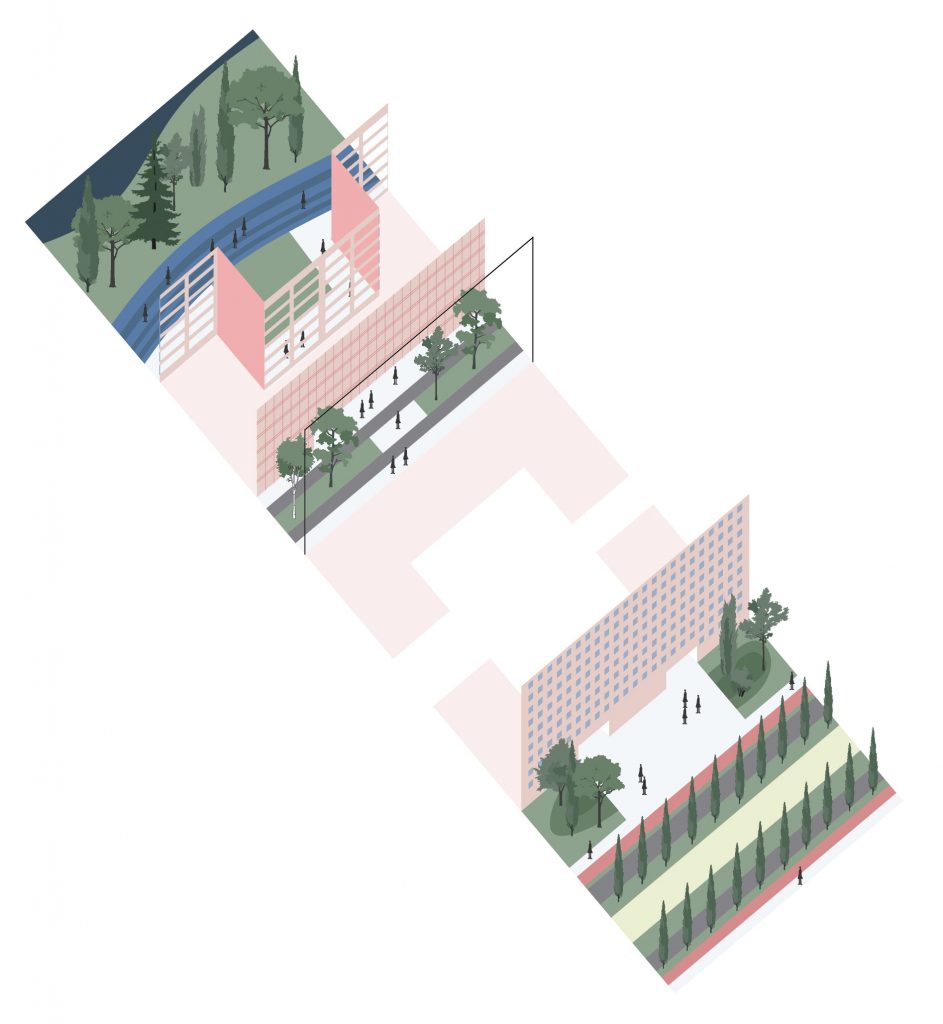
Three Addresses
The modular housing blocks are located along the coastal park and provide housing for roughly 3000 new inhabitants. The layout of the blocks and the position of the park and new roads provide the neighbourhood with three different addresses – the park address, the new Viinikanlahti street address and the Hatanpaan valtatie address – each providing a unique, rich and active urban environment. The park address connects the inhabitants and the visitors directly to the waterfront and its various public functions. It provides a pedestrian and bicycle link to the city center and the neighbouring parks and green areas. The Viinikanlahti street is designed as an active urban area with various commercial and community spaces which open up to the street. The street is flanked on both sides by a large public square which serves as a connection of the Viinikanlahti neighbourhood with the wider community. The Hatanpaan valtatie address, due to its proximity to a large traffic route, is moved away from the street. In front of the buildings areas of protective greenery are planted in order to reduce noise and pollution. In several locations, connections are established with the blocks due to functions which contribute to a larger community such as groceries stores and coworking areas.
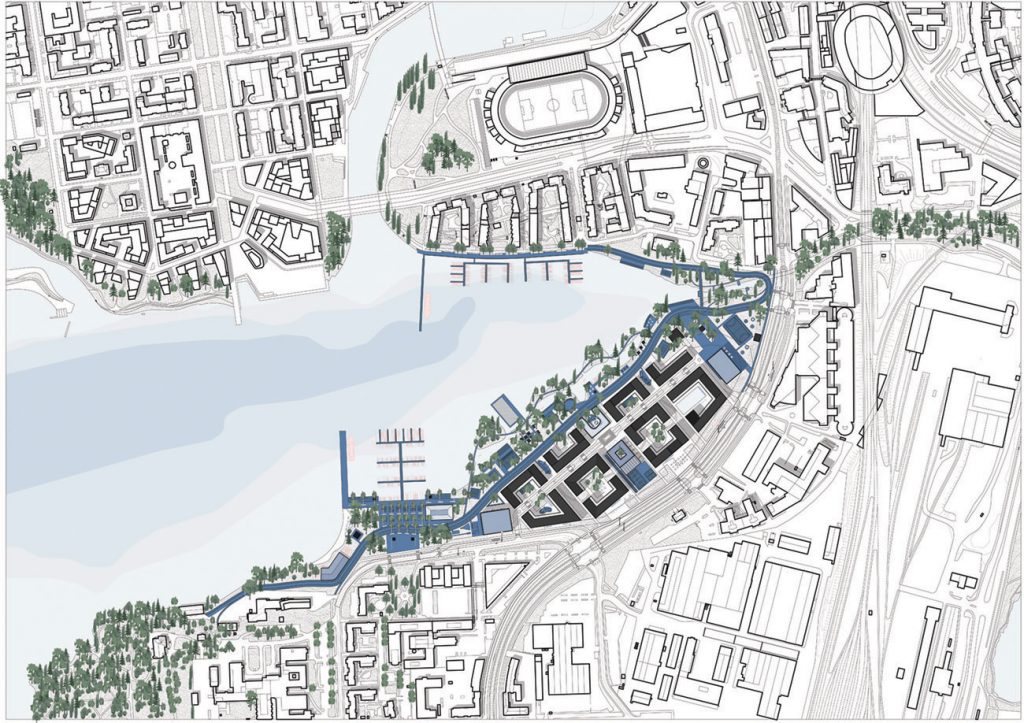
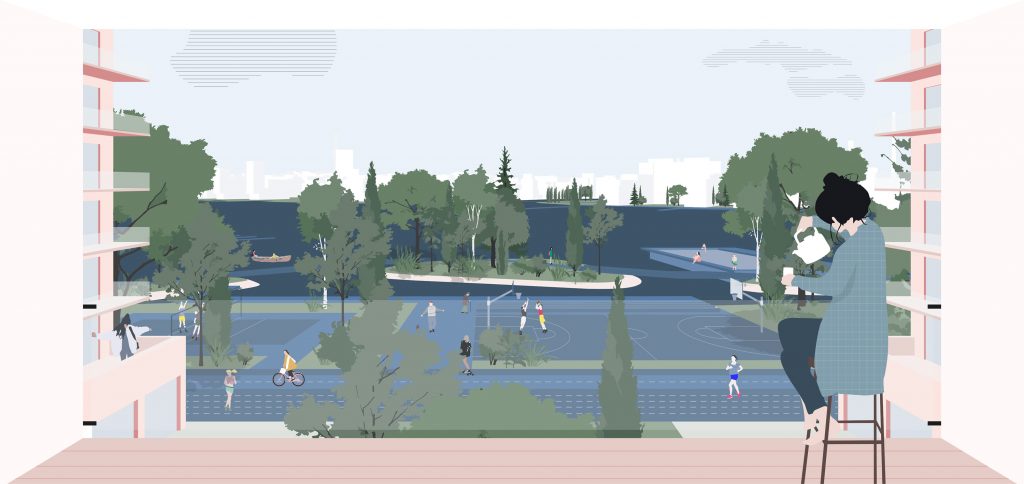
Green Link
Viinikanlahti’s new hybrid waterfront provides for a unique yet familiar experience within the city. Aside from reestablishing valuable connection in the city’s tissue, the area provides for various activities available to the entire population of Tampere. The structure of the waterfront allows for necessary or possible changes to occur naturally and without detriment to the neighborhood. It is flexible and diverse, yet modular and logical. Opting for a green waterfront instead of a grey (concrete) one goes hand in hand with the city’s ecological ambitions and the unknowns of climate change. The wide, green area is flexible to natural changes and can absorb and retain large amounts of stormwater. The amount of high and dense vegetation in the neighborhood drastically lowers the carbon emissions, while the multifunctional and reproduceable centralized parking garages predict a more positive and green future with less car traffic and better connections with the city center trough public transport, pedestrian and bike connections. Viinikanlahti is a neighborhood which is suited for the needs of today’s inhabitants but is also ready for the changes that the future might hold in store. By choosing to re-establish Tampere’s Green Link, the city creates a new type of dialogue with it’s surroundings – one which is more inclusive, sustainable, green and blue.
